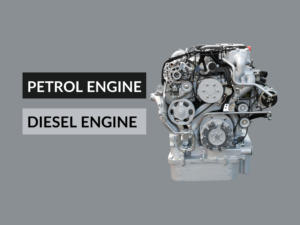Two Stroke vs Four Stroke – Understanding the Differences
Engaging 50-word Intro:
Engines play a vital role in the automotive industry, and two major types stand out: two stroke and four stroke engines. Understanding the differences between these engine types is crucial for any automobile enthusiast. In this article, we will explore what two stroke and four stroke engines are, provide examples of each, discuss their uses, and highlight ten key differences to help you understand their unique characteristics. So, let’s dive in!
What is a Two Stroke Engine?
A two stroke engine completes a power cycle with two strokes of the piston (one up and one down) within a single revolution of the crankshaft. It combines the intake, compression, combustion, and exhaust processes in just two strokes.
Examples of Two Stroke Engines:
– Chainsaws
– Motorcycles
– Outboard motors for boats
Uses of Two Stroke Engines:
Two stroke engines are popular in applications demanding lightweight and portable power equipment, such as small handheld tools and recreational vehicles. They often find use in landscaping, forestry, and marine industries.
What is a Four Stroke Engine?
A four stroke engine completes a power cycle with four strokes of the piston (two up and two down) within two revolutions of the crankshaft. It separates the intake, compression, combustion, and exhaust processes into distinct strokes.
Examples of Four Stroke Engines:
– Cars
– Trucks
– Industrial machinery
Uses of Four Stroke Engines:
Four stroke engines are widely used in various applications, including automobiles, trucks, motorcycles, construction equipment, generators, and other heavy machinery. They offer better fuel efficiency and lower emissions compared to two stroke engines.
Differences Table – Two Stroke vs Four Stroke:
| Difference Area | Two Stroke | Four Stroke |
|---|---|---|
| Operating Principle | Combines all processes in two strokes | Separates processes into distinct strokes |
| Fuel Mixture | Oil is mixed with fuel | Uses pure fuel |
| Lubrication | Oil is mixed with fuel for internal lubrication | Requires separate oil circulation system |
| Power Output | Higher power-to-weight ratio | Lower power-to-weight ratio |
| Efficiency | Less fuel efficient | More fuel efficient |
| Emissions | Higher emission of pollutants | Lower emission of pollutants |
| Maintenance | Less maintenance required | More maintenance required |
| Complexity | Simpler design and construction | More complex design and construction |
| Popularity | More popular in recreational vehicles and handheld tools | More popular in automobiles and larger machinery |
| Cost | Generally cheaper | Generally more expensive |
Conclusion:
In conclusion, two stroke and four stroke engines differ in their operating principles, fuel mixture, lubrication, power output, efficiency, emissions, maintenance requirements, complexity, popularity, and cost. Two stroke engines combine all processes into two strokes, use oil-fuel mixture, have higher power-to-weight ratio, but are less fuel efficient with higher emissions. On the other hand, four stroke engines separate processes into distinct strokes, use pure fuel with separate oil circulation, offer better fuel efficiency and lower emissions, but require more maintenance and have a more complex design. The choice between the two depends on the specific application and priorities.
People Also Ask:
- Q: Which engine type is more fuel efficient?
- A: Four stroke engines are generally more fuel efficient compared to two stroke engines.
- Q: Are two stroke engines easier to maintain?
- A: Yes, two stroke engines usually require less maintenance compared to four stroke engines.
- Q: Do two stroke engines have higher power output?
- A: Yes, two stroke engines often have a higher power-to-weight ratio, resulting in higher power output.
- Q: Are two stroke engines more affordable?
- A: Yes, in general, two stroke engines are more affordable compared to four stroke engines.
- Q: Which engine type is more commonly used in cars?
- A: Four stroke engines are the primary choice for cars due to their better efficiency and lower emissions.


